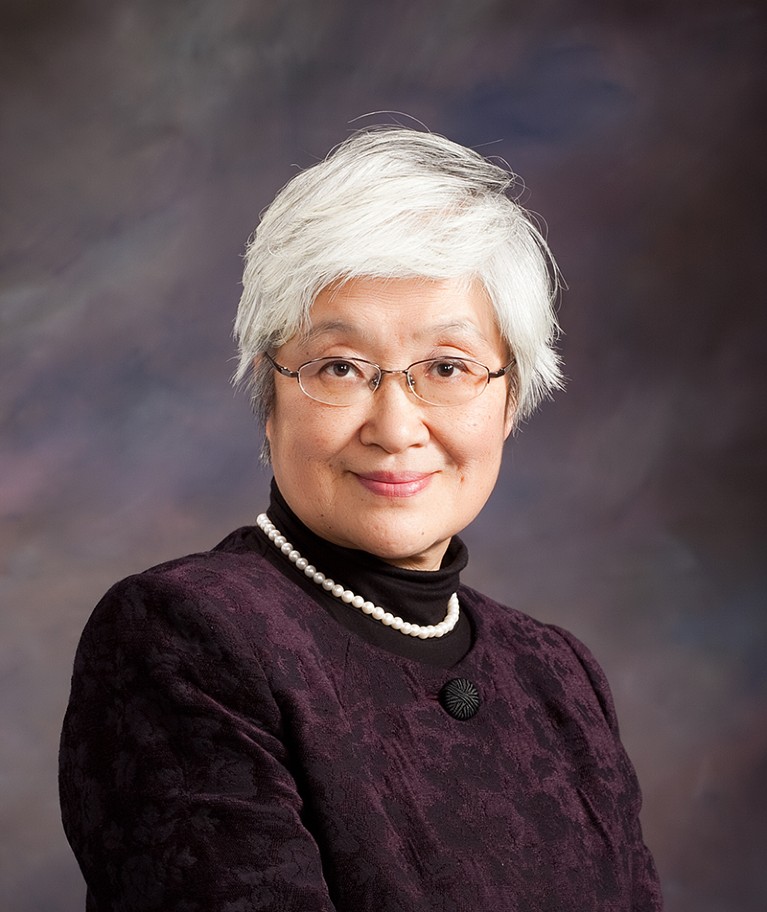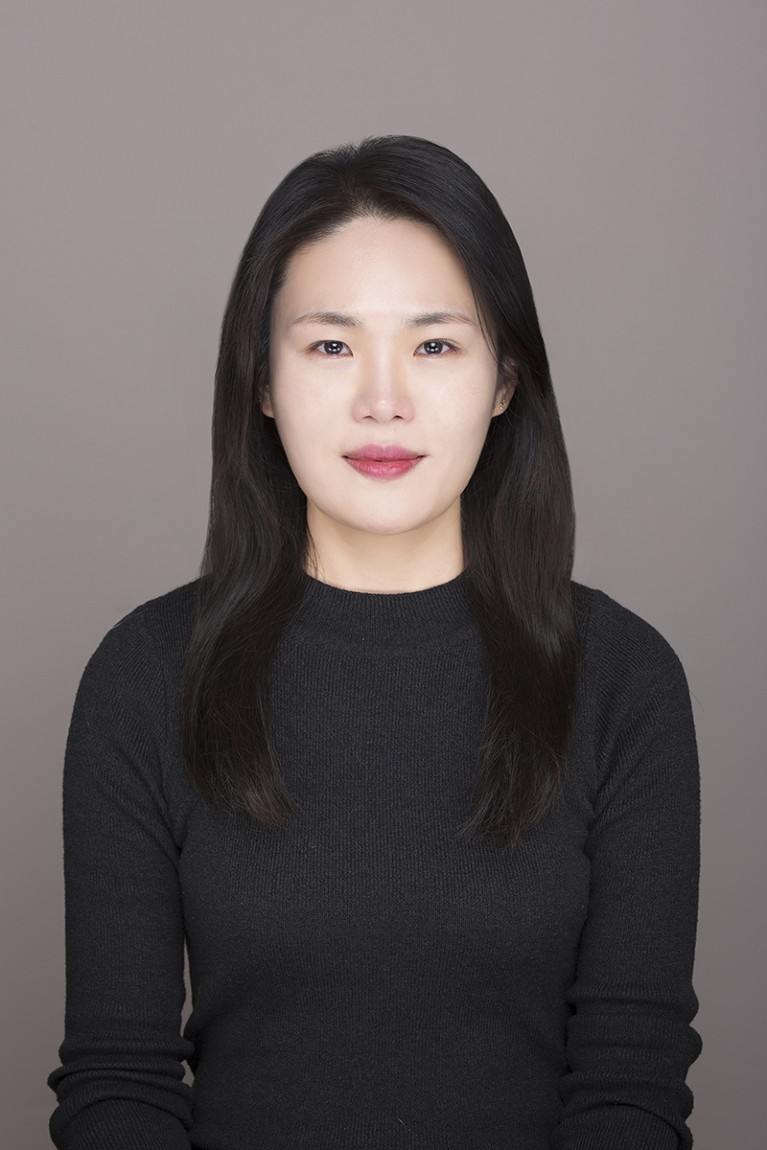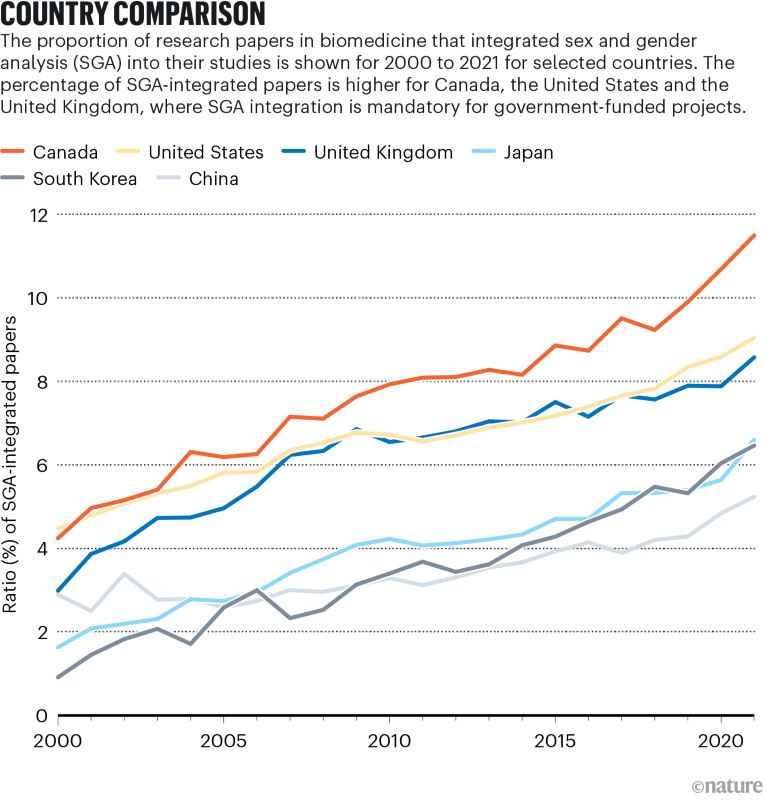When designing a research study, integrating sex and gender as variables, such as by including both female and male participants and ensuring transgender people and those who do not fall into binary categorizations are also accounted for, is key to ensuring robust and reproducible results. But this is not being done nearly enough. In medical research, for example, centuries of female exclusion have led to inadequate knowledge and funding of diseases that affect women. In the development of generative artificial intelligence (AI), a lack of sex and gender considerations has perpetuated biases and stereotypes in areas such as image creation and language translation. Such oversights not only skew research findings but also undermine opportunities for discovery. Significant advancements have been made in fields such as cancer immunotherapy, cardiovascular disease and osteoporosis as a result of using sex and gender analysis (SGA) in research, and it has revealed important differences in how men and women metabolize drugs, leading to safer and more effective doses.

Heisook Lee.Credit: GISTeR
Despite the clear need for SGA to become the norm in experimental design, there is much work to be done before the practice is standardized in research globally. In South Korea, SGA integration is encouraged and promoted through government initiatives, but more policy development and capacity building is needed to drive uptake. At the Korea Center for Gendered Innovations for Science and Technology Research (GISTeR) in Seoul, we are investigating the use of SGA in South Korean research. One analysis showed that between 2017 to 2021, just 5.65% of South Korean biomedical articles, on average, included SGA in the experimental or study design. This figure, which relies heavily on individual researchers choosing to engage with the practice, is lower than in countries where the integration of SGA is mandatory for research funding.
The increasing complexity of study designs makes SGA integration a challenge for scientists in South Korea, especially early career researchers, who are not typically taught the practice. The limited availability of sex-disaggregated resources — data, animals, cells and other materials that have been collected and analysed separately for male, female and non-binary participants — further complicates matters and emphasizes the need for training to encourage more researchers to consider SGA in their work. As the South Korean government ramps up funding and support for international collaboration, its researchers will need to get up to speed on SGA integration. Horizon Europe, the European Union’s flagship research-funding programme that South Korea joined in March, mandates SGA integration in the research it funds, for example.

Heajin Kim.Credit: GISTeR
Recent policy changes from the South Korean government have been encouraging, but they have not moved the needle much in terms of researcher and institution uptake of SGA. In 2020, amendments were made to the Korean Framework Act on Science and Technology to emphasize the importance of sex and gender characteristics. Two years later, Korea’s Fifth Science and Technology Master Plan, which outlines the country’s medium-to-long-term goals and priorities for 2023 to 2027, emphasized the importance of SGA integration.
We need buy-in from funding agencies, publishers and institutions to ensure that researchers are equipped and incentivized to implement the practice. We propose the following strategies. First, funding agencies in South Korea should consider mandating SGA integration in the research they fund, and more academic journals need to strengthen their editorial policies by requiring SGA integration in manuscript submissions.
The research community needs to ensure the management and standardization of resources, such as cells and biological models, and data that are sex or gender specific, so they can be used throughout the entire research process, from the initial design to the final analysis. At GISTeR, we are running training and outreach programmes in an effort to help researchers understand how to achieve this.

Source: Gendered Innovation for Science and Technology Research Center
Last, it is important that indicators of SGA integration in research outputs are being developed at a global level, mirroring established metrics on quantity and quality. This approach would highlight where SGA is needed and encourage its use.
It is crucial for South Korean science that improvements are made to SGA integration rates. This will not only elevate the quality of its outputs, but could help to solidify South Korea’s role in developing equitable and impactful solutions to the world’s most urgent societal challenges.
Competing Interests
The authors declare no competing interests.


